In Parts 1 and 2 of this series, I outlined several key aspects of IT infrastructure, the prevailing types of cloud and managed infrastructure and the different approaches to creating a business case for the cloud. So how do we bring it all together?
The question of whether the cloud is a viable alternative to the existing methods of IT infrastructure provision and operation isn’t a simple comparison of apples to apples. The single most important aspect of developing the business case is truly understanding your business and its goals, so it's key to determine as many things prior to evaluating the cloud and understanding the benefits of it.
The first step addresses what the objectives and goals are at a business level, understanding whether they can afford to continue to divert much-needed capital into non-core activities such as operating traditional IT infrastructure. Next is considering whether a rapidly scalable, flexible and cost-efficient solution will serve their original goals more effectively. In part 2 of this series, we discussed understanding the approach: infrastructure, application or staffing-focused, which helps shape the rationale used in the business case. As the rationale is developed, it should be continually tested against the original objectives to ensure it remains consistent.
So, let’s build a business case using the infrastructure approach. What’re the key components to use and the goals? Let’s start with the goal of enabling the business to be more innovative.
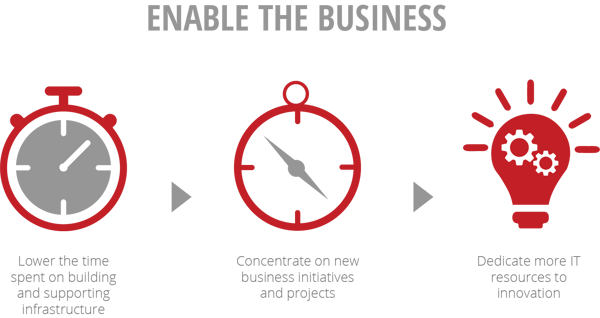
Here the company seeks to be more innovative to differentiate itself in the market and with its customers; this is the goal and the value proposition. But what good is having a goal without the plan to develop it? So, the development plan to harness innovation must be outlined as well to make innovation translate into more business. The plan should identify the new market opportunities, and revenue and new customers that will be acquired due to the innovation. You’ll outline it here because a business case contains the building blocks to present the financial case for this goal.
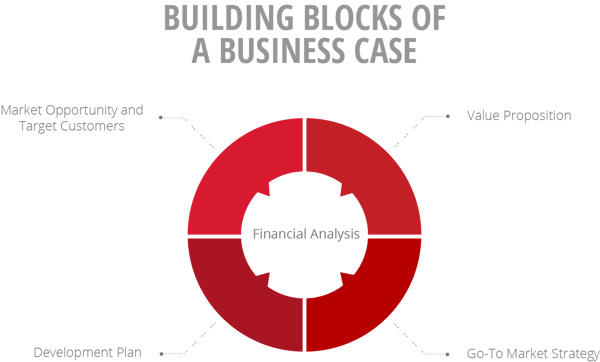
Each of the building blocks have opportunities and costs that are outlined, which will feed into the financial analysis. The financial analysis quantifies the business case that supports the goal, which is the value to the business for the change to innovation.
Now let’s bring the cloud back into the picture - this we’ll call the second step. Here we introduce a more traditional set of building blocks that are more commonly seen in a business case for IT.
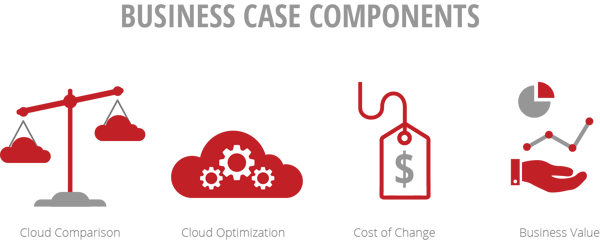
The cloud comparison is the head to head cost contrast between the existing infrastructure and the proposed move to the cloud. Cloud optimization is the costs spun out of the retirement of the traditional IT infrastructure, which is most commonly the cost of management and includes 3rd party vendors and in-house talent. The cost of change is the implementation costs which includes project management and the overlap between the new solution and the full retirement of the old. The business value is the amount identified in the first exercise.
Using this method makes the business case for IT easier to articulate and is more comprehensive and complete to other stakeholders and decision makers in the business.
With the potential for unlimited scalability, availability and reliability that comes from taking advantage of cloud services, opportunities emerge. To successfully harness these opportunities, quantification is key to gain the full buy-in of the business and alignment with corporate goals.
-1.png?width=1092&height=792&name=logo%20(1092x792)-1.png)
%20copy(black%20letters).png?width=1092&height=792&name=logo%20(1092x792)%20copy(black%20letters).png)
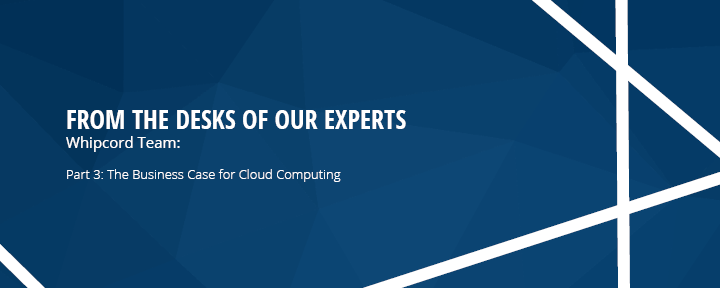


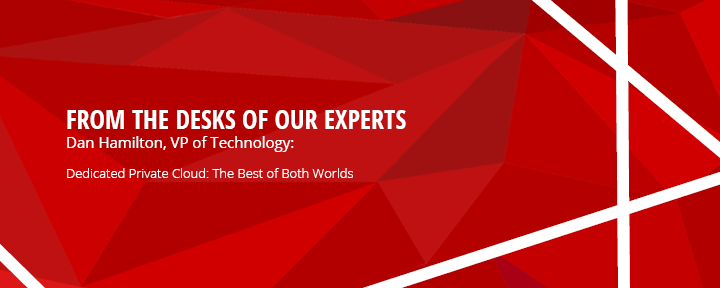
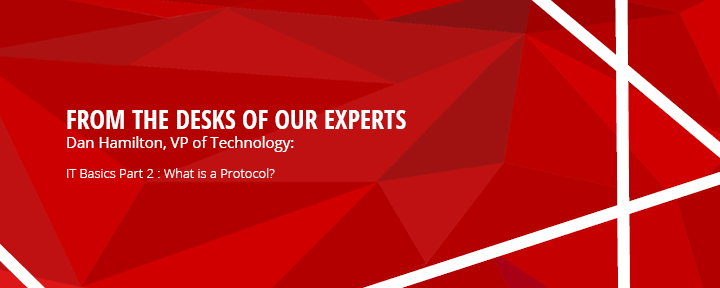
.png?width=100&height=91&name=white%20logo%20(100x91).png)